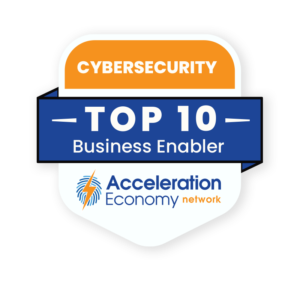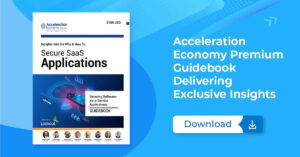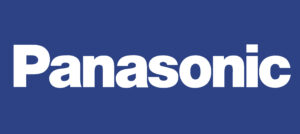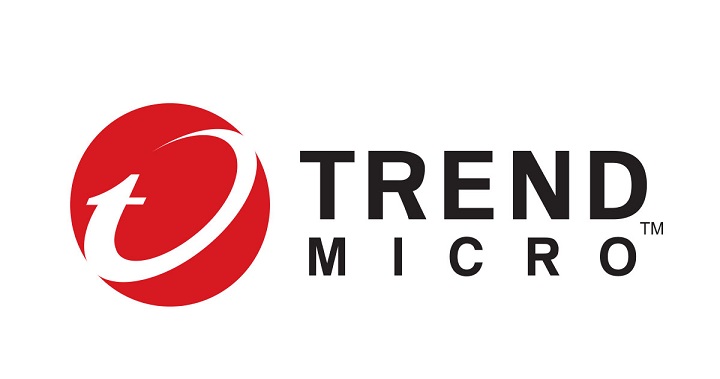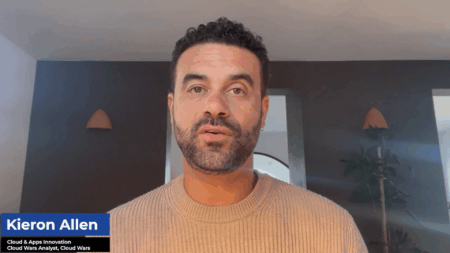As the number of digitally driven businesses continues to grow, fueled by the constant technological advances that enable them to accelerate their business, so too does their attack surface. In fact, the distributed work model and the proliferation of Internet of Things (IoT) devices are two major factors contributing to a broad expansion in the corporate attack surface.
Just a few years back, IT security strategy mainly needed to protect on-prem endpoints, but today’s tech infrastructure is increasingly distributed, complex and, as a result, vulnerable. That’s why cybersecurity companies must respond with a unified approach that addresses the wide range of work models and employee locations.
A holistic approach requires organizations to find, understand, and mitigate security threats in every corner of their business operations. Furthermore, companies need to be able to measure the threat level and determine the severity of their response on demand. Most cybersecurity experts agree that the most robust approach to cybersecurity strategy involves consolidating a company’s threat mitigation tools and policies.
Trend Micro, a 30-plus-year-old tech stalwart responsible for the cybersecurity health of over 500,000 organizations, delivers unified cybersecurity to provide customers with a full view of their systems, users, and networks, as well as the tools to prioritize responses.
Trend Micro is on our Top 10 Shortlist of Cybersecurity as a Business Enabler firms.
Who Is Trend Micro?
Founded in 1988 in the United States by Steve and Jenny Chang and her sister Eva Chen, the family-owned, anti-virus business was soon headquartered in Taiwan.
From this base, Trend Micro made some impressive moves in the East Asian market, establishing a security device arm and launching the first corporate server protection product. Today, the company has 7,000 staff in 65 countries. Annual revenue is $1.7 billion. The company is publicly traded on the Tokyo Stock Exchange.
Co-Founder Eva Chen still plays a primary leadership role in Trend Micro as the company’s CEO. Prior to this, she served as Trend Micro’s Executive Vice President and CTO. Trend Micro’s vice president of market strategy is Eric Skinner, who has been with the company for 11 years and previously held the role of CEO at the healthcare tech company Adaptiv.
“If you zoom out across the 35 years that we’ve been in business, the high-level focus is unchanged,” Skinner said in an interview. “There are cyber criminals out there and our obsession is protecting our customers from these cyber criminals.
“The way those cyber criminals have been behaving over the last 35 years has evolved nonstop, The attacker is getting cleverer and finding new ways to work around defenses and Trend Micro has worked to keep solutions modern, to innovate, to find new ways of catching these attackers.”
What Does Trend Micro Do?
While Trend Micro has a comprehensive product offering, for purposes of this profile we’ll focus on Trend One, its unified cybersecurity platform. This cloud-based platform works on the basis of a consolidated cybersecurity ecosystem, where the entirety of an organization’s attack surface is protected through a single operating platform.
When it comes to protecting a company’s attack surface, Trend One covers users and devices, on-prem and cloud data centers, applications, and cloud storage, as well as all on- and off-prem e-mail systems and networks. The platform supports hybrid and multi-cloud environments with cloud-native app protection, as well as multi-layer threat detection and response with built-in threat avoidance tools.
Through Trend Micro Risk Insights, Trend One enables users to measure the risks posed by issues such as misconfiguration as well as other internal and external threats. Organizations can easily track users, domains, IP addresses, cloud apps and storage, as well as online and offline workloads. Trend Micro’s extended detection and response (XDR) technology is enabling customers to find and eliminate threats in context, giving them a broader perspective on their overall security posture through advanced analytics.
“We’ve been working really hard with our XDR technology to help customers detect the activity that matters most so that they’re able to focus their limited resources on that threat activity,” says Skinner.
“We have a system called Vision One at the heart of the Trend platform where all of this [threat] information is collected and then presented as views for the different types of personas in the customer organization.” Recognizing that not every member of an organization needs the same intelligence, Trend Micro provides a means for users to gain insights targeted to their function and requirements.

“We have a system called Vision One at the heart of the Trend platform where all of this [threat] information is collected and then presented as views for the different types of personas in the customer organization.”
Eric Skinner, VP of Market Strategy, Trend Micro
One big differentiator is its Global Threat Research team. Made up of hundreds of researchers, data scientists, and more than 10,000 independent researchers across 15 global threat research centers, the team’s insights are delivered continuously, in conjunction with large global institutions such as Interpol, the United Nations, and the FBI. In 2021 alone, the team processed over five trillion threat queries and blocked over 94 billion threats.
Trend Micro’s research extends into other areas as well: The company regularly releases threat intelligence reports, such as a recent report on the evolution of Windows kernel threats and regular vulnerability reports.
Furthermore, the Trend Micro Research team developed the Zero Day Initiative (ZDI) to provide researchers worldwide, whether or not they are affiliated with Trend Micro, with financial incentives to report zero-day vulnerabilities to affected vendors.
As well as helping to guide the company’s internal research, collaborating with the global community of white hat hackers and vendors has enabled Trend Micro to fix and share vulnerabilities with the public. Today, ZDI is the world’s most extensive, non-affiliated bug bounty program.
Which companies are the most important vendors in cybersecurity? Click here to see the Acceleration Economy Top 10 Cybersecurity Shortlist, as selected by our expert team of practitioner analysts.
Looking ahead, Skinner explained where Trend Micro is focusing its development strategy and resources: “There’s a category that’s emerging called attack surface risk management where companies try to get a better sense of the security posture of all the assets they have, not just devices, but identities, data, and applications in use in the organization,” says Skinner. “It’s about assessing that huge mess of data points around all your assets, assessing the risk, and then prioritizing the mitigations associated with them.”
Attack surface risk management complements XDR capabilities, letting customers proactively gain visibility across diverse security and non-security products, including non-Trend Micro products that the customer has in use.
The company has just added new Security Operations Center (SOC) technology and expertise, further expanding its product portfolio, through its acquisition of Anlyz.
“TrendMicro continues to be a leader in endpoint security and is making a push in the areas of attack surface risk management and zero trust with their unified platform. This capability brings together data from IT and infrastructure operations, the SOC and the Cloud to provide security leaders a cohesive view of risk across their enterprise coupled with threat intelligence to empower them to take action.”
Chris Hughes, CISO and Acceleration Economy cybersecurity analyst

Customers That Trend Micro Has Dazzled
Panasonic North America used Trend Micro to detect more and respond faster to multi-directional threats. “Within this region, we have multiple business units, multiple divisions and you would have multiple teams managing endpoints and networks,” said Samer Mansour, Vice President of Panasonic North America, in an interview with Trend Micro.
Trend Micro’s XDR enabled the team to ingest all of this data in one place. As a result, the Panasonic North America cybersecurity team was empowered to take action on threats in every corner of the organization.
“From a visibility perspective, almost every company out there has their traditional sandbox, a platform that allows you to ingest data from different endpoints but the difference is the XDR platform allowed us to connect our endpoints, connect our network sensors and email CAS (Cloud App Security) application where you can look at the threats from different layers and respond to it,” said Mansour. “Not only visualize it, but also take action.”
Another key benefit afforded by Trend Micro is the single dashboard that enables Panasonic North America to have greater control, fluency, and visibility over threat patterns.
Why Trend Micro Is on Our Top 10 Cybersecurity Shortlist
The Acceleration Economy CISO analyst team chose Trend Micro for the Top 10 Shortlist of Cybersecurity as a Business Enabler firms because:
- Trend Micro has demonstrated over decades a deep understanding of the evolving cybersecurity threat landscape and developed a unified cybersecurity platform that grows at the pace of each individual company’s attack surface.
- The company has and continues to champion the capabilities of XDR technology to identify threats in context.
- The company’s threat intelligence capabilities are outstanding. We were impressed by Trend Micro’s dedicated research team and the benefits its work provided to customers.
- Its impact extends beyond its customer base: Trend Micro further utilizes its threat intelligence to provide an essential research and analysis service for the wider cybersecurity community, with regular reports, trend predictions, and the ZDI.
- Trend Micro protects every attack surface, whether in the cloud or on-prem. As more companies transition into hybrid and multi-cloud environments, this breadth of coverage is essential.
Want more cybersecurity insights? Visit the Cybersecurity channel:





